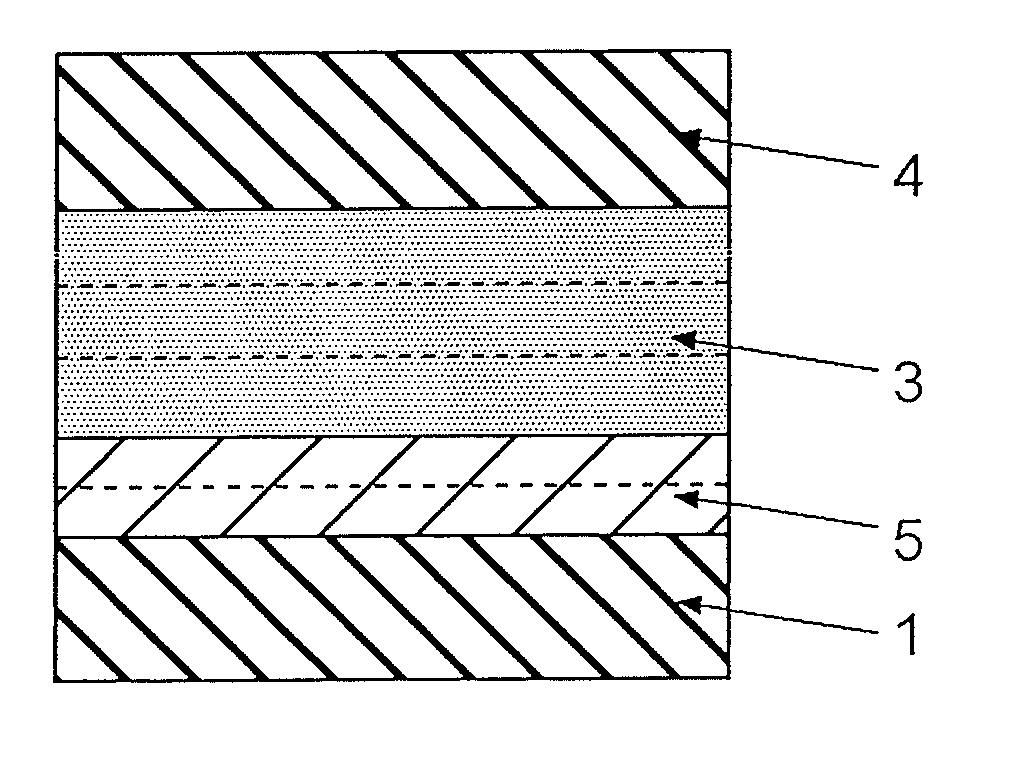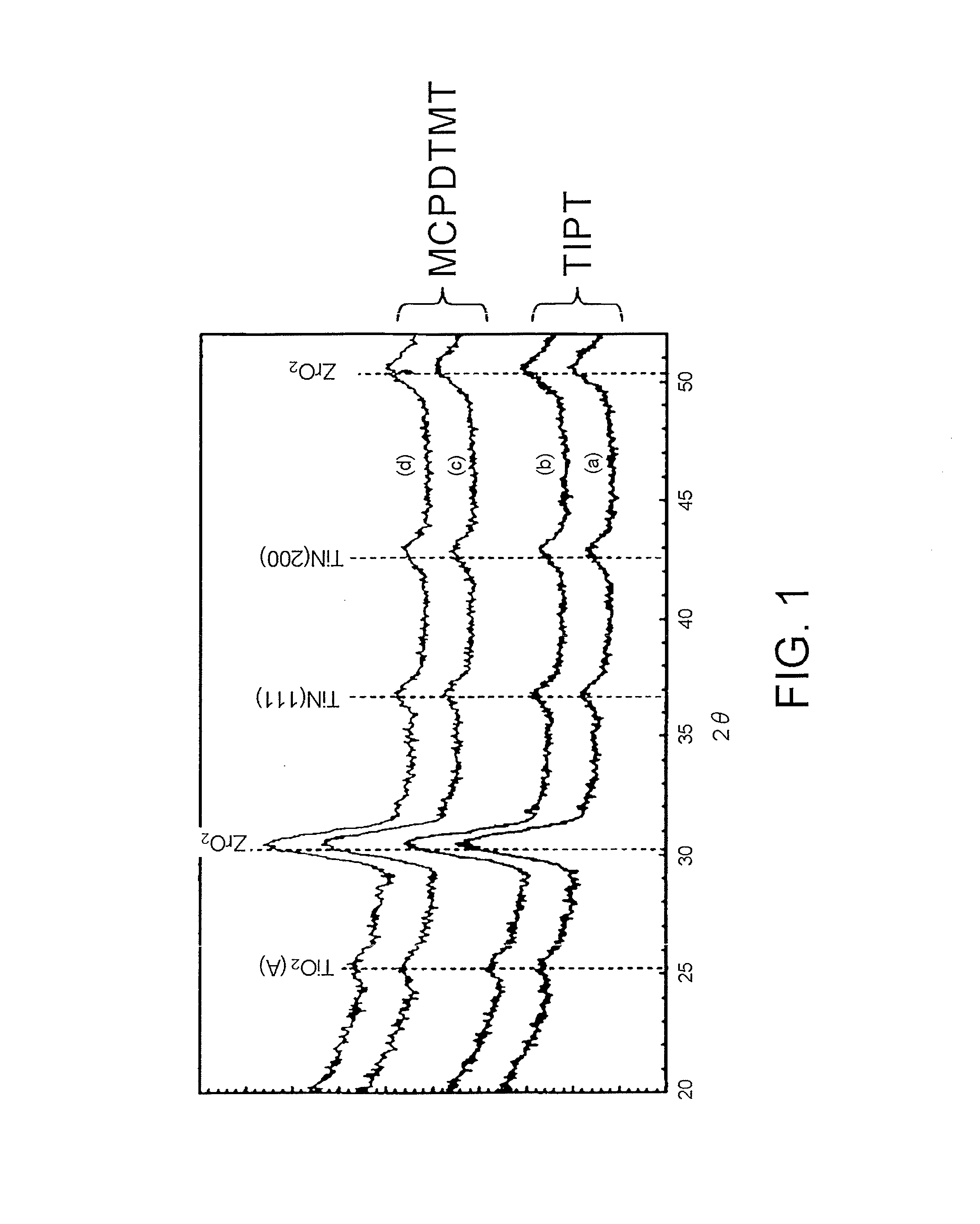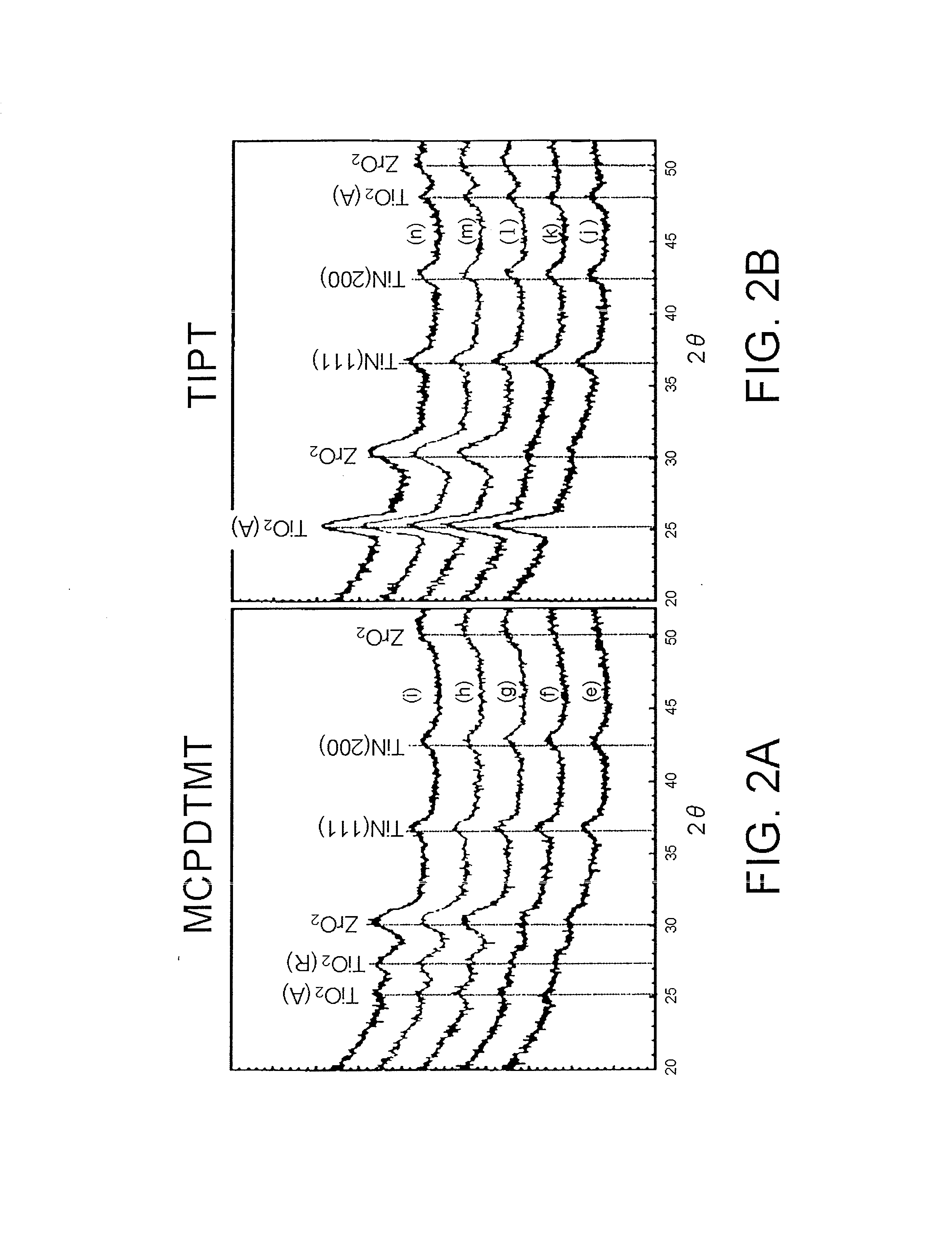Method of forming titanium oxide film having rutile crystalline structure
a technology of rutile crystalline structure and titanium oxide, which is applied in the manufacture of capacitors, capacitors, semiconductor devices, etc., can solve the problems of increased resistance, decreased adhesion, and difficulty in annealing at a high temperature in order to protect semiconductor devices, and achieves excellent leakage current characteristics and easy production.
- Summary
- Abstract
- Description
- Claims
- Application Information
AI Technical Summary
Benefits of technology
Problems solved by technology
Method used
Image
Examples
experimental example 1
[0029]First, in consideration of application to a capacitor, a TiN film having a thickness of 10 nm was formed as a lower electrode on a substrate, and then a ZrO film was formed thereon. The formation of the ZrO film was performed by repeating process steps a desired number of times, the process steps including (1) introducing a Zr source into a reaction chamber and causing the Zr source to be adsorbed on the surface of the TiN film, (2) discharging the remaining amount of the Zr source that was not adsorbed by a purge gas, such as N2 or Ar, from the reaction chamber, (3) oxidizing the Zr source using a reaction gas such as O3, and (4) purging the remaining amount of the reaction gas that has not reacted. Here, the ZrO film was formed at a thickness of 6 nm. The formed ZrO film was a crystalline film.
[0030]In sequence, a TiO film was formed on the resultant ZrO film by an ALD method. The formation of the TiO film was performed by repeating process steps a desired number of times, t...
experimental example 2
[0033]The formation of a TiO film on a ZrO film was performed in the same way as in Experimental Example 1 by changing the thickness of the ZrO film to 4 nm. Likewise, the results of performing X-ray diffraction were presented in FIG. 2. Here, annealing was performed under 4 temperature conditions, including 280° C., 300° C., 400° C. and 600° C. The annealing was performed in an oxidizing atmosphere at respective temperatures for 10 minutes. In FIG. 2A and FIG. 2B, FIG. 2A in the left presents the results when MCPDTMT was used as a Ti precursor, (e) as depo, (f) annealing at 280° C., (g) annealing at 300° C., (h) annealing at 400° C., and (i) annealing at 600° C., and FIG. 2B in the right presents the results when TIPT was used as a Ti precursor, (j) as depo, (k) annealing at 280° C., (l) annealing at 300° C., (m) annealing at 400° C., and (n) annealing at 600° C.
[0034]In the result (e) as depo using the MCPDTMT, only the peak of TiN of the lower electrode was observed, but no peak ...
experimental example 3
[0036]Next, it was verified whether or not a TiO film formed using MCPDTMT, in which the formation of the rutile crystalline structure was identified, can be used as a dielectric film for a capacitor by changing the thickness of a base ZrO film. In the experiment, the thickness of the TiO film was fixed to 8 nm, and the thickness of the ZrO film was varied up to 7 nm. The results obtained by measuring the relative permittivity of TiO films that were formed after being annealed at 600° C. are presented in FIG. 3. At thicknesses of the ZrO film ranging from 0.1 nm to 4 nm, high-permittivity TiO films were produced since the rutile phase was obtained. When the thickness of the ZrO film exceeds 4 nm, the anatase crystalline structure appeared, thereby lowering the relative permittivity. When the TiO film is directly formed on the TiN film (the thickness of the ZrO film is 0 nm), the anatase crystalline structure also appeared, thereby lowering the relative permittivity.
[0037]In sequence...
PUM
| Property | Measurement | Unit |
|---|---|---|
| temperature | aaaaa | aaaaa |
| thickness | aaaaa | aaaaa |
| thickness | aaaaa | aaaaa |
Abstract
Description
Claims
Application Information
 Login to View More
Login to View More - R&D
- Intellectual Property
- Life Sciences
- Materials
- Tech Scout
- Unparalleled Data Quality
- Higher Quality Content
- 60% Fewer Hallucinations
Browse by: Latest US Patents, China's latest patents, Technical Efficacy Thesaurus, Application Domain, Technology Topic, Popular Technical Reports.
© 2025 PatSnap. All rights reserved.Legal|Privacy policy|Modern Slavery Act Transparency Statement|Sitemap|About US| Contact US: help@patsnap.com



